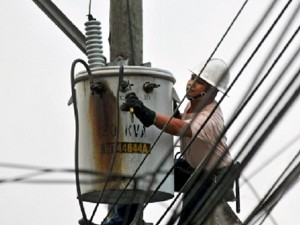The Asean region, including the Philippines, stands to benefit from China-based firms eyeing to temporarily relocate their operations amid the COVID-19 outbreak, Malaysian financial giant Maybank said on Friday.
“The COVID-19 outbreak could potentially accelerate the shift of the supply chain toward the Asean. Many multinationals, especially automakers and electronics makers, have been impacted by the virus outbreak, which forced closures of China factories after the Lunar New Year break. This is forcing firms to source their supply from other countries to fill in the gap left by China’s temporary closure,” Maybank Kim Eng analysts Chua Hak Bin, Lee Ju Ye, and Linda Liu said in a report titled “Asean Economics: Cross-Border Bank Lending and Shifting Supply Chains.”
In the case of the Philippines, Maybank Kim Eng noted of Nikkei Asian Review’s report wherein Honda Motor supplier Ftech had announced it would move its brake pedal production to the country from Wuhan.
Ftech’s brake pedal production is supplied to Honda factories in China and Japan.
Another leading carmaker, Toyota, had been reported to move production of car seat covers from China to Japan or Thailand, while electronics giant Samsung had been shifting production to India and Vietnam with the goal of diversifying its production base, Maybank Kim Eng said.
This was expected to augur well to the Philippines where, Maybank Kim Eng noted, foreign investment pledges had been “surging” especially in the manufacturing sector, even as actual foreign direct investment (FDI) flows were “falling sharply” last year.
Last Thursday, the government reported that the foreign-led projects approved by the country’s seven investment promotion agencies reached a record-high P390.1 billion in 2019.
However, the latest Bangko Sentral ng Pilipinas data showed that FDI fell by almost 30 percent during the first 11 months of last year.
“This may be because actual FDI tend to lag FDI approvals by up to five years,” Maybank Kim Eng noted.
“Despite the slow FDI inflows, other indicators seem to support the supply chain shift thesis. For instance, construction of industrial buildings surged by 30 percent in 2018 and extended the pace into end-September 2019. Capacity utilization in the Philippines is also climbing to historical highs, boosted by clusters such as petroleum products, basic metals and electrical machinery,” Maybank Kim Eng said.


